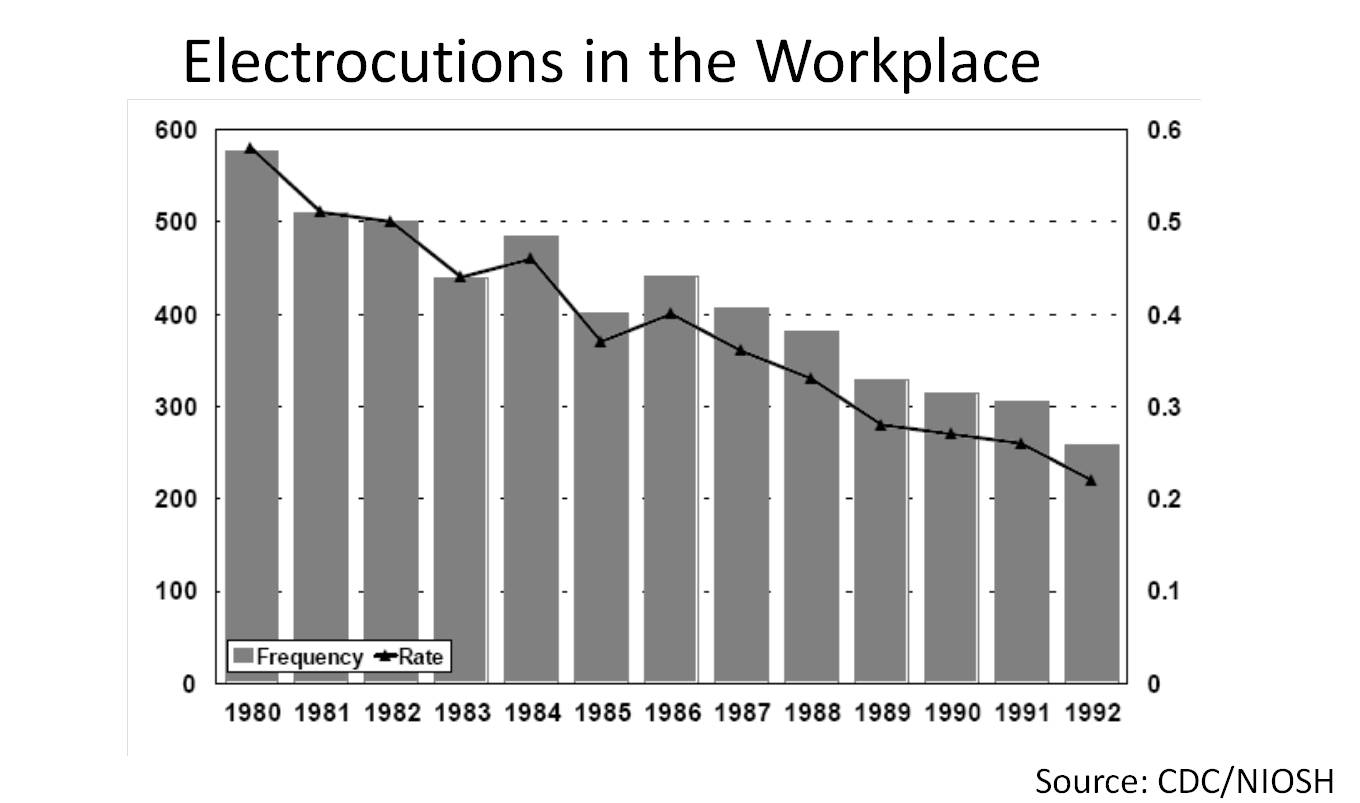GFCI Defined
What is a GFCI?
- GFCI stands for Ground Fault Circuit Interrupter
- OSHA defines GFCI as “A device intended for the protection of personnel that functions to de-energize a circuit or portion of a circuit within an established period of time when a current to ground exceeds some predetermined value that is less than that required to operate the overcurrent device (circuit breaker or fuse) of the supply circuit.”
The two most common types of GFCI’s used in the entertainment industry are Class A and Class C.
- Class A: An interrupter that will interrupt the circuit at 6 mA or more but not when the ground fault current is 4 mA or less.
- Class C: Used where voltage to ground does not exceed 300. It will interrupt the circuit at between 15 and 20 mA. As since this is above the “let go threshold” of most people it is essential that a good equipment ground exists to assure a parallel fault condition in the case that a person gets into or creates another fault path.
How do GFCIs work?
A GFCI compares the current going out to the utilization equipment & the returning current to see if there is a difference. In the case of a Class A device, the circuit is interrupted if there is more than 4 to 6 mA difference between the two currents. These units also trip faster as the current balance increases. Below is a diagram (thanks to Mike Holt) that shows the circuit and how it operates. Similar to how you would check your balance on a feeder run with an amprobe, the GFCI is using a current transformer that is reading both the hot and neutral. If the meter detects imbalance of the 2 circuits up to more than 6mA then it will shut the circuit off.

What is UL 943?
UL 943 is the standard for construction and testing of GFCIs that is accepted by OSHA, the US National Electrical Code (NFPA 70), the Canadian Electrical Code and Mexico. This standard is written by Underwriters Laboratories.
It is important to make sure that the GFCI device you are using is UL 943 listed as a portable power protection device. Without this listing there is no guarantee that the device meets the required industry standards for quality and safety. BENDER produced the first GFCIs in the industry that achieved this listing. All Class A products in BENDER LIFEGUARD family are UL 943 listed and meet or exceed required industry standards.
Other GFCI facts:
- GFCIs have been required by NEC since the seventies and they have been credited with reducing residential electrocutions by 50%! – Source: Electrical Safety Foundation International
- If every household in the US had GFCI then nearly 280 lives could be saved each year – Source: Electrical Safety Foundation International




